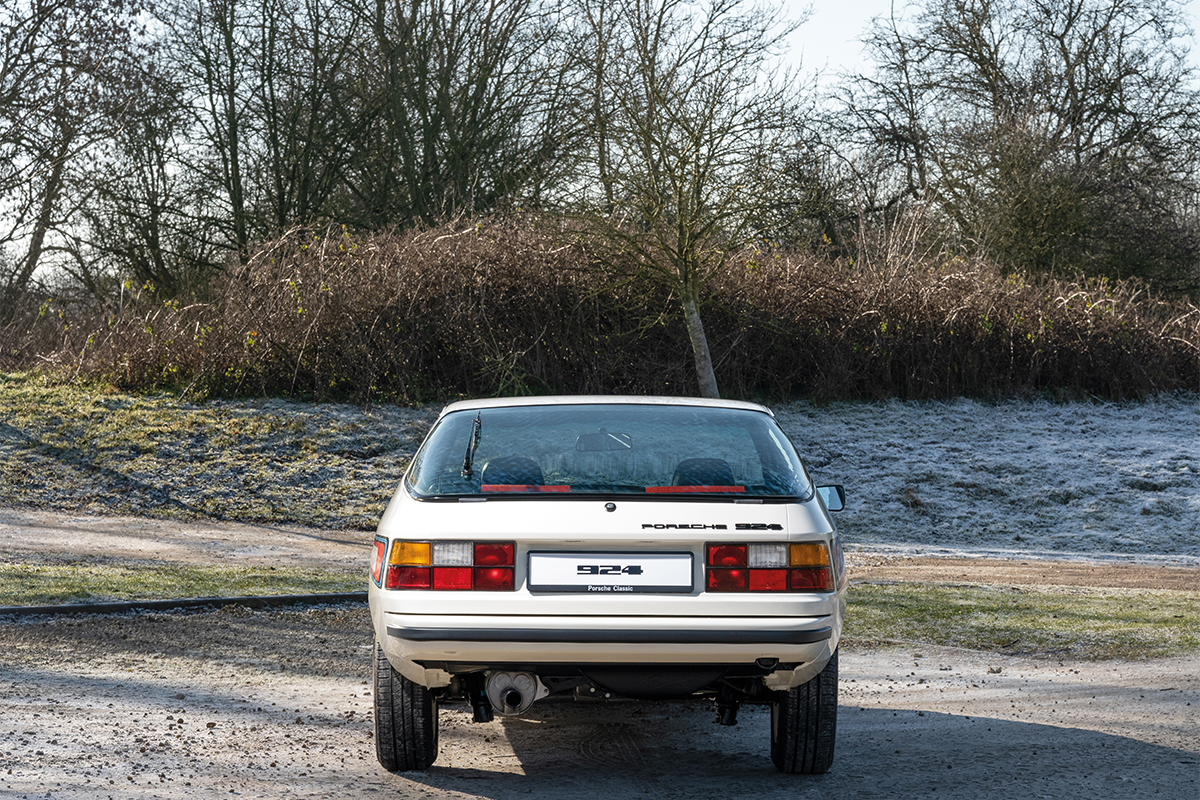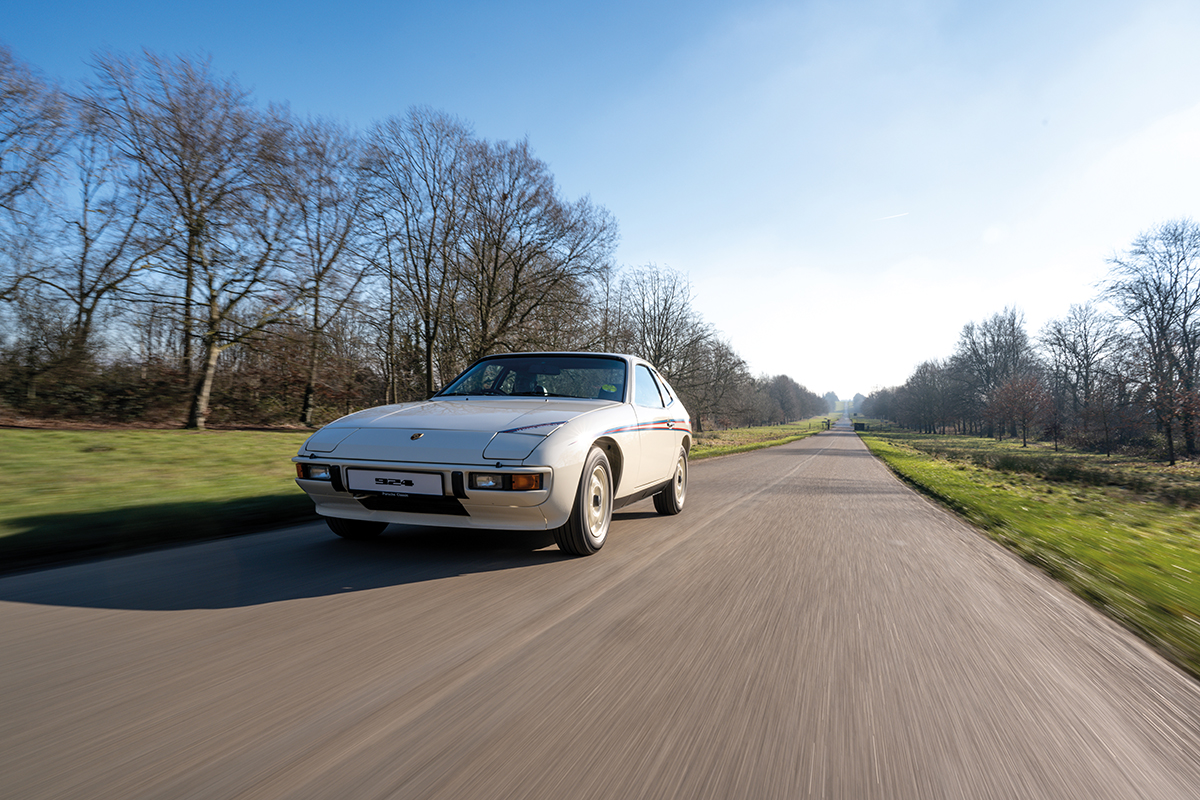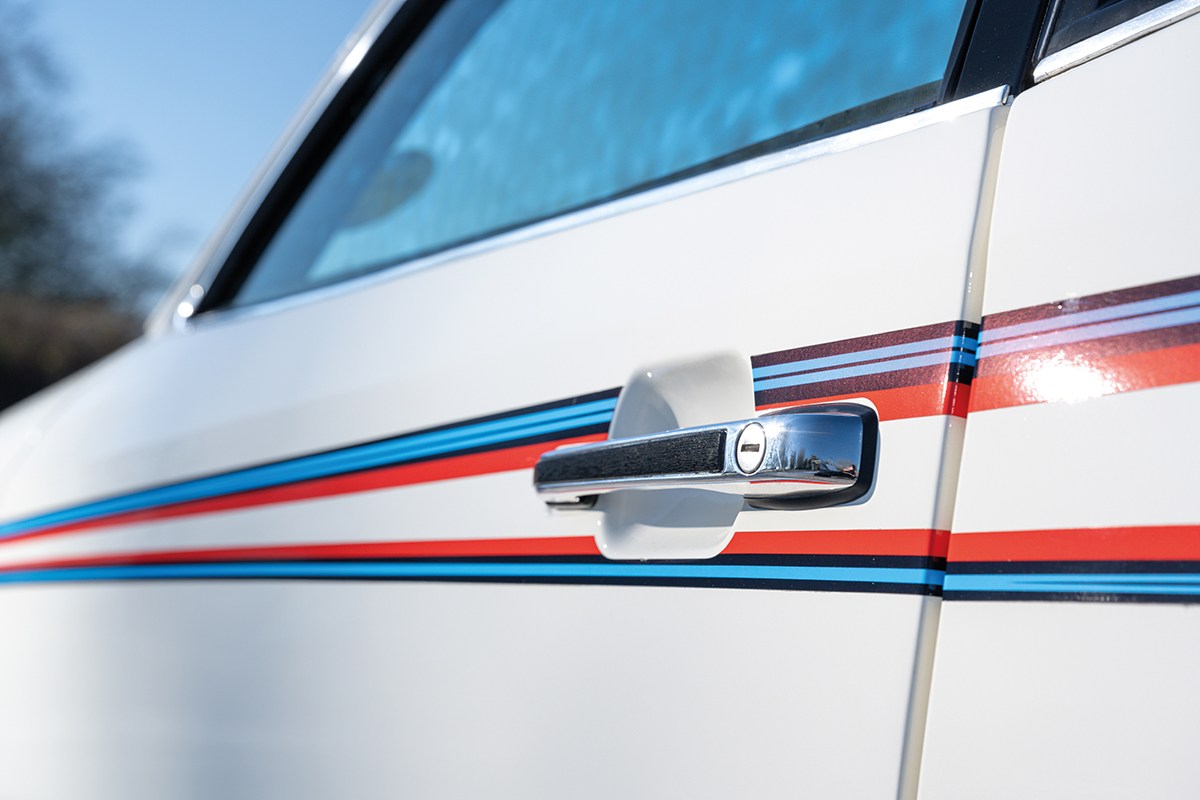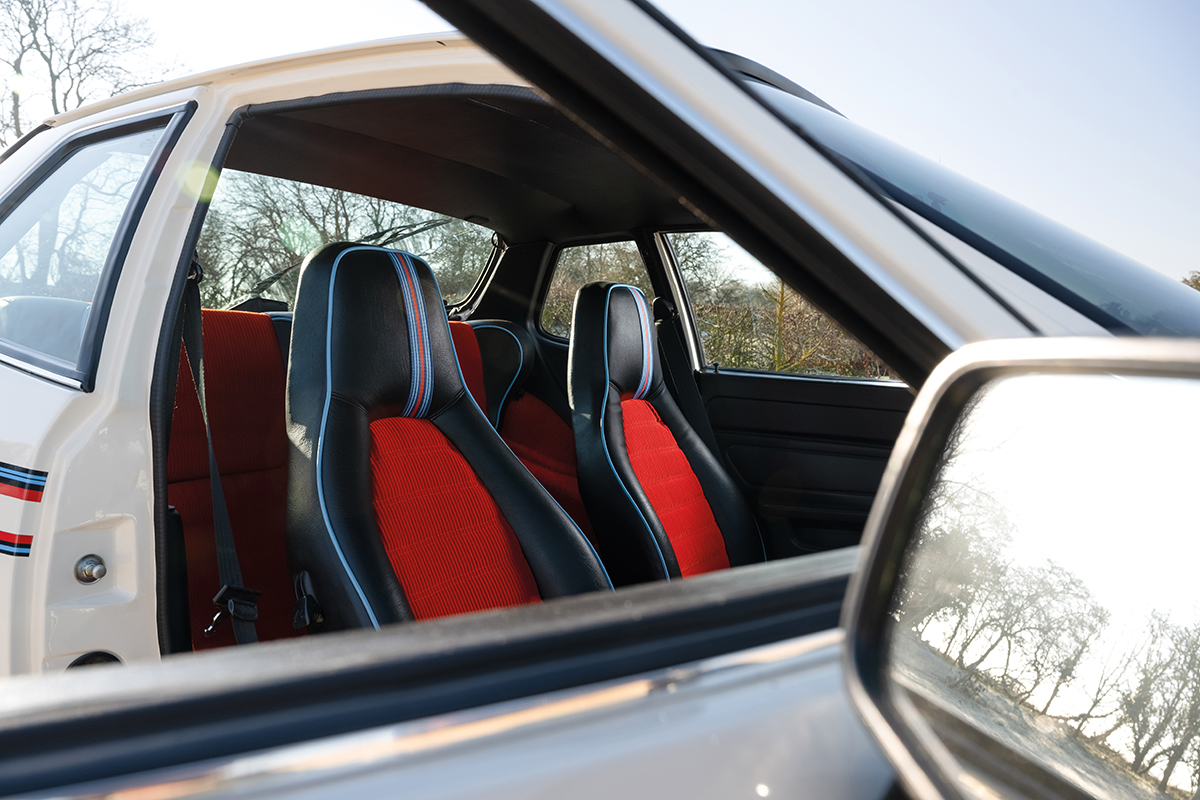Only 5,145 924s were built in 1976, with the challenges of an all-new model built by a third-party workforce in a requisitioned plant 45 minutes north of Zuffenhausen creating a three-pronged headache for Porsche’s small, stretched management team.
Porsche developed the car for Volkswagen as it too prepared to abandon the costly-to-build and outmoded 914. Internally coded EA 425, with EA short for ‘Entwicklungsauftrag’ or ‘development commission’, the 924 began life in 1972 when Porsche was already heavily invested in the design phase of what was to become the 928.
.jpg)
Outline requirements were for a compact, affordable and efficient new sports car using plenty of available VW group parts. The brief also asked for a useable two-plus-two cabin configuration and generous luggage capacity. Working under the auspices of head of design Tony Lapine, Dutchman Harm Lagaay drafted a futuristic, aerodynamic form with a low, pointed nose and near-kamm tail rear treatment with a vast glass canopy. It was a bold and striking concept, all the more remarkable for its adherence to the limitations of production. This was no show car, but a viable vision for a mass production Volkswagen sports car with all those boxes ticked: spacious cabin, big boot, water-cooled transaxle design and class-leading drag coefficient.
Lagaay was, however, about to be undone by none other than Giorgetto Giugiaro, whose original Golf was being drawn up at Italdesign to replace the evergreen Beetle as the world’s dependable family runabout. Alongside this was a rakish new coupé using similar styling and the exact same platform, and what would soon become the first-generation Scirocco was released some months ahead of the Golf in 1974. Porsche could hardly deny that this was a more logical means for Volkswagen to expand its portfolio to include a car with sporting inclinations, however disingenuous they might be in a front-wheel-drive hatch.

Left with the option to walk away or buy out, Porsche – sufficiently convinced of the 924’s potential to earn serious money without threatening to dilute the brand – went with the latter. VW’s offer was surely extremely favourable, bearing in mind how deeply invested in the project it already was, and that the deal would see Porsche using not only a VW-owned facility in the form of Audi’s Neckarsulm plant but also its existing workforce.
Those early 924s, Europe-only models with 125bhp from a reworked 2.0-litre in-line four inherited from the Audi 100, were well received by a motoring media more used to rough idling, understeer and tank slappers from Porsche. Benign and composed, the water-cooled, front-engined 924 was an entirely different proposition that, although not in the same league as a 911 with regards to quality or grunt, was a genuinely capable sports car that flattered the user in a way its rear-engine sibling never could.

The first 924s arrived in the USA in late 1976 as 1977 model year cars, bringing with them a formal end to the curious but compelling 912E. To cut its emissions further for the USA, the 924’s engine had been detuned to just shy of 100bhp and early sales brochures actually avoided making mention of power, concentrating instead on fuel consumption. When combined with Porsche’s first fully automatic gearbox, a three-speed unit also taken from Audi, performance on those early American cars was dismal and this cutting-edge new offering was no faster than the 912E it was meant to eclipse.
But Porsche’s ambitions for the 924 were only just beginning. In 1976, the Motorsport Department won the World Endurance Championship for the fourth time with the Martini-sponsored 908/3 and 936. To celebrate its success and to reinforce that sporting provenance, a 924 World Championship edition was announced in December of that year and sold in limited numbers worldwide in 1977. All 3,000 cars were finished in white with matching white alloy wheels and Martini racing stripes. The interior featured bright red carpet, red seat centres and blue piping with Martini stripes on the headrests.
.jpg)
The following year saw the arrival of the 924 Turbo, bringing with it a heavily reworked in-line four now making 168bhp. Further revisions included uprated suspension, larger alloy wheels and tyres, disc brakes all round and a five-speed dogleg ’box. The Turbo begat the Carrera GT, itself a visual precursor to the 944, and with that came the highly successful GTP race cars that competed at Le Mans in 1980 and 1981. The 924 had shrugged off the memories of its faltering start and was ready to set the ’80s alight.
Julian Morris
Julian Morris is Managing Director of Elite Motors in Northampton, a recommended repair centre specialising in modern Porsches. A member of R10, Julian is participating in the Porsche Club Championship and racing a 997 in Class 1.
His ultra-rare ‘Martini Edition’ 924 was restored as part of the Porsche GB Classic Restoration Competition in 2016, with an extensive rebuild bringing the car back to its precise and highly unusual factory specification. Bodywork for the restoration took six months with a second 924 purchased as a donor car, while parts were sourced from as far afield as Hungary and the USA. The corduroy cloth seat inserts are original German stock, as are the genuine Martini stripes.
Such a labour of love was duly rewarded when Porsche asked to display the car in the Museum in Zuffenhausen. After so much work, Julian politely declined and, having been exhibited by Porsche Classic at Le Mans, the Nürburgring and Silverstone, the car now has pride of place in his collection alongside a similarly well-restored 911 SC.